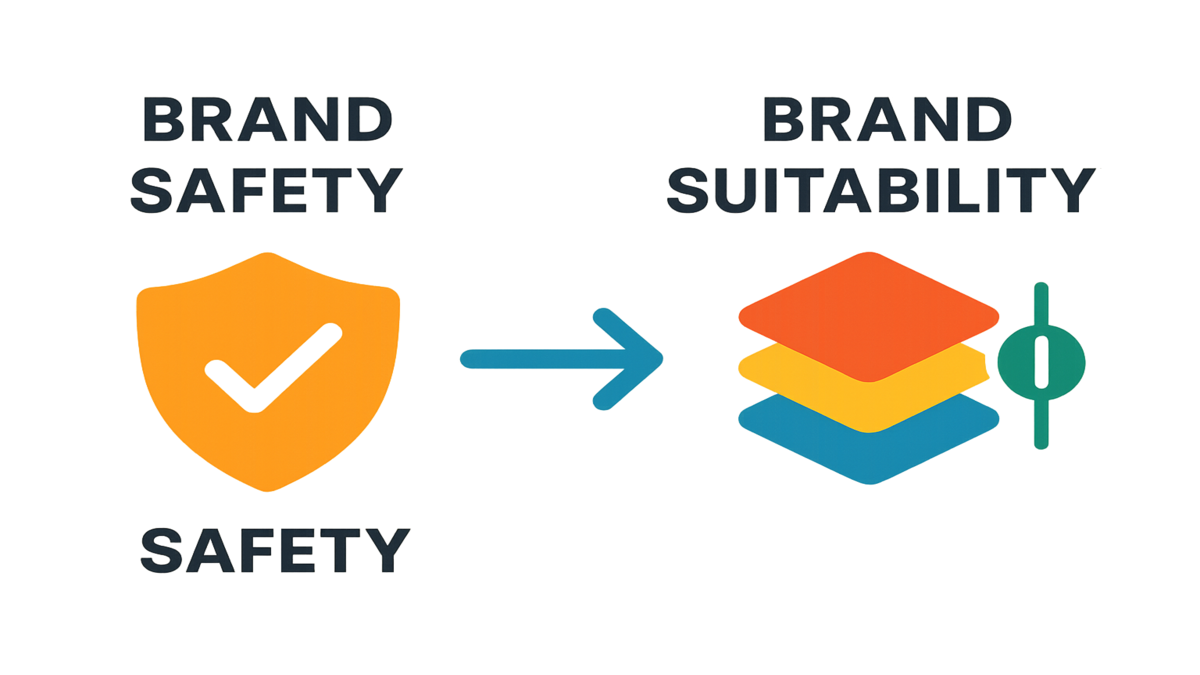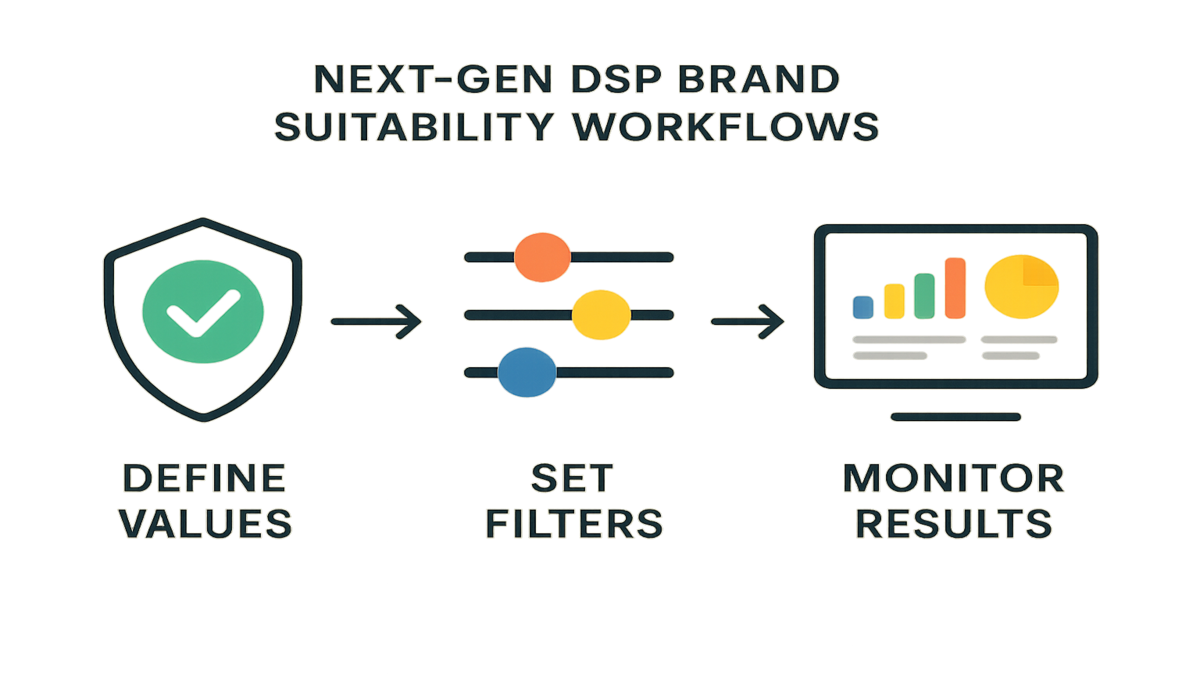
How Open Beta DSP Controls Are Upgrading Brand Suitability

It’s 2024, and running digital ads is straight-up wild. You throw cash at campaigns, trust the targeting—then bam. Your eco yoga mats show up on a “Dumpster Diving for Survival” livestream. Not exactly who you had in mind.
Here’s the deal: till now, we all basically hoped for the best and slapped on blocklists to dodge really bad sites. It was like taping a “please avoid this” note to your wallet and praying the ad gods listen. Spoiler: they don’t, not always.
But things are getting smarter. With the open beta launch of new brand suitability settings in big names like Adobe DSP and Amazon DSP, you actually get some control. Not just blocking the worst, but matching your vibe, values, and style—so your brand lands where it fits. Now it isn’t just about dodging disasters. It’s about putting your ads in the best spots for your brand, one campaign at a time.
Even better, since these tools are in open beta, it means you—yeah, you—can help shape how they work. Now you get API-level controls, campaign-level tweaks, plus third-party upgrades. You can finally flex while others still use those blocklists and set-it-and-forget-it buttons. Just know, with new power comes more to learn and, yep, extra cost. That’s how it goes.
Curious yet? Let’s break down what’s real, what’s coming, why it matters, how you can be first, and what could trip you up.
TL;DR
- Open beta brand suitability = precise control on where your ads show up
- Adobe DSP & Amazon DSP now offer deep, API-powered and third-party controls
- Go past regular brand safety: match your brand’s style and values, not just dodge problems
- More options and new features—but managing gets a bit trickier
- Video + suitability controls are rolling out everywhere (and quick)
- Early testers help shape tools—jump in now to set the rules (and win an edge)

Brand Suitability
The Context Wars
A few years ago, brand safety just meant don’t end up next to hate speech. Simple. Hotels avoided malware blogs. Food brands dodged crime stories. Just playing defense. It worked, but let’s be honest—kind of basic.
Now, context is everything. Brands want the right vibe next to their message. Adidas wants sports and hype, not only “safe” news. Duolingo wants fun, not boring documentaries. Patagonia? If it’s not close to green living or activism, skip it.
Brand suitability means your ad doesn’t just avoid the cringe. It actually fits your audience, story, and values. You’re scoring each spot not just for risk, but for personality, relevance—even feeling.
“Suitability is the art of not just keeping a brand safe, but making sure it sings in the right choir,” says Sam Tomlinson, Partner at PwC focused on media risk.
Want to get more out of Amazon DSP’s controls? Check our DSP Services for strategies that fit your brand.
Open Beta Power
Before, you got blocklists and on/off settings. No finesse. With these open betas from Amazon and Adobe, you get details—new dashboard modules, direct API tweaks. Now you can skip sad news for a playful campaign, block bad vibes, or only aim for certain moods.
You want "irreverent entertainment" but not "serious news”? You got it. Set it at campaign or ad-group level—your brand, your voice, your rules. While lots of advertisers are still asleep on this, you can be miles ahead.
Amazon and Adobe DSP Controls
Third-Party Integrations
Back then, targeting was all about age or stuff you liked. Brand safety meant running everything through basic filters. Now, it’s much more about context and tech muscle.
That’s where tools like DoubleVerify (DV), Integral Ad Science (IAS), and Comscore come in. They plug right into DSPs and flag sketchy or off-brand spots before your ad lands there.
Don’t want your ad on Twitch streams about gaming violence? There’s a filter for that. Want happy news or only “wholesome DIY”? These tools let you narrow down like a pro.
Pro Example
With Adobe DSP, flip on DoubleVerify’s "Authentic Brand Safety" segments for pre-bid checks. Every single impression gets screened before your ad enters the race. So, instead of fixing mistakes later, you’re stopping them early—with proof to show.
Kelly Burke, VP at DoubleVerify, says: “Smart suitability filters are now basic must-haves for big brands. The best marketers are already testing these APIs to lock in alignment on every campaign.”
If you use third-party integrations, bigger brands take less risk and boost performance. No more dumping money on cleaning up badly placed ads after the fact.
Contextual Filtering & Keywords
Amazon DSP’s open beta lets you use dashboards or APIs to target—or block—by content category. Violence, adult, gambling, politics, and more. You can even pick by tone, mood, or certain words. Got a family-friendly product? Exclude ads from popping up next to sad movies or heated debates.
Set filters as tight as per ad-group. Maybe the main brand needs wholesome spots, but a sister brand wants edgy content. You pick the split, all in your hands.
Quick heads-up: dialing in all these controls does shrink your ad pool. That can bump your CPM (cost per thousand views). But being seen in the right places is worth the cost for most brands.
Beyond Safety
Custom Goals by Context
Adobe’s open beta leads the way with suitability-focused campaign goals—like “ADSPSUITABLEVIDEO_ENGAGEMENT.” This lets you aim campaigns for not just clicks, but relevant clicks. AI works in the back, always matching your need for fit and reach.
You can say: “I want engagement numbers and a young, positive mood.” The system will try to get both, moving money to the best matches in real time.
Laura Kim, Head of Programmatic Strategy at a top agency, puts it this way: “Automation lets us control not just where ads show, but what energy they bring.”
Budgets Match Values
With these controls, you’re not wasting dollars on random spots. You tell the platform, “Spend only where content fits my values.” Early testers love the control—and say they get more efficient reach.
Word of warning: set filters too tight and your ads might not show at all. The trick is to start broad and layer on controls, so you get the perfect mix of focus and scale.
Beta: Extra Tasks & Costs
Where It Works
Let’s be honest: beta means bumps. Not every ad or partner is covered (yet). The Amazon DSP API is about Twitch inventory—video, display, some handpicked media. Don’t look for these tools in Amazon Search or Product Display right now. They’re coming, but not here yet.
Also, every extra filter usually costs more. DSPs charge for fancy checks, especially third-party ones. It’s premium stuff, so count it in with your ad spend.
A programmatic manager says: “Beta means we’re learning as we go. There are bugs—but first-mover perks are worth it.”
API Experts Needed
The most powerful controls demand some know-how—hidden behind API settings or advanced menus. Stuff like brandSafetyTierTarget or custom segments. So, if your team knows DSP or you have a good partner, you’ll be ahead. But P.S.: easy dashboards are coming. Both Amazon and Adobe want everyone in the game soon.

Suitability Controls: The Future
From Video to Everything
Open beta tools aren’t just for video. The future is all about one dashboard—controlling banners, social, CTV, and search all in one spot.
Amazon is already testing wider coverage, not only Twitch. Facebook’s Meta Brand Safety Manager does this too. In a year, you’ll probably have these controls on all your campaigns. Get ready to manage your vibe everywhere.
Automation & Customization
The dream? Algorithms that find the right style—not just what’s "safe." They’ll use AI for sentiment and topics, even hot culture trends. Third-party data will link up with DSP data for dead-on matches.
What does this mean? Less guesswork, more automated help. DSPs will suggest the right settings based on your old campaigns, new trends, or even season. No more 50 checkboxes—just pick a slider from “buzzy TikTok” to “serious NPR.”
Mini-tweet: “In programmatic, ‘good enough’ context is dead. Only brands who actively manage suitability survive the algorithm.”
What to Do Now
- API > UI: Got a coder? Use Amazon DSP API for perfect campaign or group-level suitability controls. Way more precise than regular menus
- Use third-party filters: Plug in DoubleVerify, IAS, or Comscore for smarter filtering
- Test custom goals: On Adobe DSP, try suitability-focused campaign objectives. Watch how KPIs shift
- Pilot on Twitch/video: Do short tests. Check the reports. Compare your results and CPMs
- Talk to support: Tell your DSP reps you want in early. More features and updates will come your way
Bottom line: Best marketers are building what’s next—running real tests, tweaking, and giving feedback. When suitability is everywhere, they’ll be years ahead.
Open Beta: Quick Pulse
- Suitability is the new fight: Now it’s not just about avoiding issues, but making your ads fit perfectly
- Third-party filters = real wins: Trusted segments = less risk, fewer mistakes, cleaner results
- Early adopters set the rules: Start now and help shape what “good” looks like
- More custom = more work: The better your controls, the more there is to learn. Get ready for some growing pains
Suitability Open Beta FAQ
How is brand suitability different from brand safety in DSPs?
Brand safety blocks ads from showing next to really off-limits stuff—hate, adult, malware. Suitability matches placements to your brand’s style and mood. It’s less “don’t show here,” more “pick the best spots.”Which platforms support open beta brand suitability features?
Right now: Amazon DSP (mostly for Twitch), Adobe Advertising DSP, some Facebook via Meta’s tools. It’s changing fast.Are there extra costs for these filters?
Yep. Companies like IAS, DoubleVerify, Comscore, and Peer39 charge for their data. The tighter your targeting, the higher your ad costs go—a tradeoff for better placement.What types of inventory are covered by Amazon DSP’s open beta?
Mostly Twitch—video and display. A few Amazon-owned spots too. More to come as they expand.Can smaller teams use these features, or do you need tech skills?
Right now, deep controls need API skills or a good DSP setup. But easier dashboards are coming soon.What’s tricky when setting up suitability controls?
It’s complicated! Too many controls can wreck your campaign reach and hike up your costs. You have to watch and adjust as you go.
Fast-Track Suitability Setup 2024
Want to move fast? Try this quick start for a suitability-first plan:
- Know Your Brand: Dig into what fits (and does not) your brand. List the “must-haves” and “hard no” contexts.
- Ask Your DSP: Contact your DSP or partner to turn on the latest suitability settings—don’t wait for the menu version.
- Test Filters: Run short tests. Add big topic, vibe, or keyword blocks to your current video/display ads—track what changes in results and inventory.
- Use Third-Party Filters: Enable controls from DoubleVerify, IAS, or Comscore for extra safety.
- Pick Custom KPIs: If your platform allows, use goal templates like "ADSPSUITABLEENGAGEMENT." Make reports show what matters to your brand.
- Watch and Adjust: Schedule weekly report checks—use tools like Amazon Brand Suitability Reports. Tweak as you see what pays off (and what just eats money).
Suitability is the new standard. You can play catch up—or start building your own roadmap. This open beta is your shot to learn early and shape the rules, so when these features go big, you’re already leading.
Ready to boost your DSP setup and turn suitability into a real edge? Try an Amazon Brand Lift Study. Or build out with Amazon Attribution. For sharper tracking, check Requery. Want more tips to grow? See our DSP guides.

